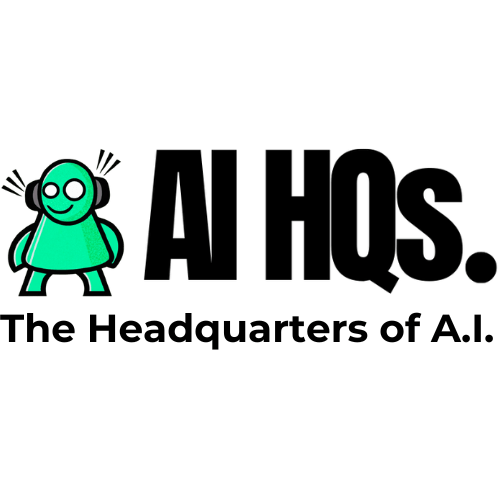What is the AI Alliance?
In a groundbreaking collaboration, IBM and Meta have recently revealed the formation of the AI Alliance, a global coalition comprising over 50 influential organisations, including AMD, Intel, NASA, CERN, and Harvard University. The primary objective of this alliance is to propel the cause of “open innovation and open science in AI,” marking a significant departure from the closed AI systems championed by industry leaders such as OpenAI and Google.

The AI Alliance, though not explicitly mentioning OpenAI, signifies a palpable ideological clash that has been brewing over the past year. The battle lines are drawn between companies like OpenAI, which tend to guard their AI model weights and data closely, and those like Meta, envisioning a future where AI is developed transparently, with model weights available for others to use and build upon.
According to the alliance’s news release, open and transparent innovation is deemed essential to empower a diverse range of AI researchers, builders, and adopters. The emphasis is on providing the necessary information and tools to harness AI advancements in ways that prioritise safety, diversity, economic opportunity, and benefits for all. Meta’s President of Global Affairs, Nick Clegg, expressed the alliance’s commitment, stating, “We believe it’s better when AI is developed openly—more people can access the benefits, build innovative products and work on safety.”
The AI Alliance echoes the spirit of the AIM Alliance formed in 1991, which united Apple, IBM, and Motorola against the dominance of the “Wintel” duopoly. Unlike its predecessor, the AI Alliance is a diverse amalgamation of tech industry leaders, research groups, government entities, and academia, all sharing a common goal of fostering open AI research and innovation.
The AI Alliance boasts an impressive roster of members, ranging from AI benchmarking and platform groups like Hugging Face and MLPerf to renowned universities such as UC Berkeley and the University of Illinois Urbana-Champaign. Government research entities like NASA, CERN, and Singapore’s Agency for Science, Technology, and Research also contribute to this collaborative effort. (For a full list of members, refer to the end of the article.)
Aside from promoting open AI research, the AI Alliance has outlined several key initiatives to advance the field responsibly. These include the development of benchmarks and evaluation standards, fostering an AI hardware accelerator ecosystem, and supporting exploratory AI research globally. The alliance is also committed to promoting diversity in AI foundation models, aiming to create models that address societal challenges in areas like climate and education.
While it remains to be seen how much impact the AI Alliance will have, it undeniably marks a pivotal moment in the trajectory of AI development. The alliance draws a clear line in the sand, highlighting the divergence in philosophy between those advocating for openness and collaboration and those favouring closed, proprietary approaches. Similar to the coexistence of platforms like Windows and Linux in the software market, there may be room for both approaches in the future of AI.
In a parallel development, Meta has unveiled Llama 2, a family of AI language models with a distinctive commercial licence, allowing integration into commercial products. Ranging from 7 to 70 billion parameters, Llama 2 reportedly “outperforms open-source chat models on most benchmarks.” This move by Meta follows the earlier release of LLaMA, which was source-available with a non-commercial licence.
Llama 2’s “pretrained” models, trained on an impressive 2 trillion tokens, boast a context window of 4,096 tokens, influencing the length of content the model can process at once. Meta also highlights fine-tuned models tailored for chat applications, trained on “over 1 million human annotations.” While Llama 2 may not match the performance of OpenAI’s GPT-4, it positions itself favourably among source-available models, according to industry experts.
Meta’s move towards source-available models, starting with LLaMA and now with Llama 2, signifies a departure from the closed-source stance adopted by tech giants like OpenAI, Microsoft, and Google. The open approach, while celebrated for fostering transparency and democratising access to AI, is not without its controversies.
Critics argue that open source AI models carry inherent risks, including potential misuse in areas such as synthetic biology, spam generation, or the spread of disinformation. Meta’s decision to release Llama 2 for commercial use, while commendable for encouraging transparency, also raises concerns about the potential for misuse, especially as the models circulate in the broader developer community.
The controversy surrounding the open approach emphasises the need for responsible innovation and transparent practices in AI development. While Meta’s open stance aligns with the principles of transparency and collaboration, challenges such as potential misuse and data privacy concerns underscore the importance of establishing ethical guidelines and standards within the industry.
In light of these challenges, Meta has published a “Statement of Support for Meta’s Open Approach to Today’s AI,” signed by executives and educators from various domains. The statement emphasises an open innovation approach to AI, promoting visibility, scrutiny, and trust in AI technologies.
As the AI Alliance embarks on its journey to reshape the landscape of AI innovation, and Llama 2 takes centre stage as a formidable source-available language model, the AI community awaits the unfolding of this dynamic narrative. The alliance’s commitment to open innovation and Meta’s strides towards commercially available source models signal a transformative period in the evolution of AI.
In conclusion, the convergence of the AI Alliance’s collaborative ethos and Meta’s source-available models invites us to ponder the future of AI development. The juxtaposition of open and closed approaches serves as a catalyst for discussions on responsible innovation, transparency, and the ethical considerations that will shape the next chapter of artificial intelligence. For all my daily news and tips on AI, Emerging technologies at the intersection of humans, just sign up for my FREE newsletter at www.robotpigeon.beehiiv.com







